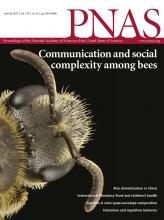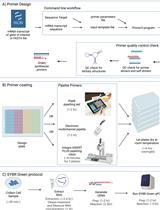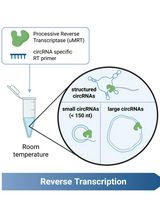- EN - English
- CN - 中文
Immunoprecipitation of Tri-methylated Capped RNA
三甲基化加帽修饰RNA的免疫沉淀
发布: 2018年02月05日第8卷第3期 DOI: 10.21769/BioProtoc.2717 浏览次数: 9677
评审: Gal HaimovichSavita NairAnca Flavia Savulescu
Abstract
Cellular quiescence (also known as G0 arrest) is characterized by reduced DNA replication, increased autophagy, and increased expression of cyclin-dependent kinase p27Kip1. Quiescence is essential for wound healing, organ regeneration, and preventing neoplasia. Previous findings indicate that microRNAs (miRNAs) play an important role in regulating cellular quiescence. Our recent publication demonstrated the existence of an alternative miRNA biogenesis pathway in primary human foreskin fibroblast (HFF) cells during quiescence. Indeed, we have identified a group of pri-miRNAs (whose mature miRNAs were found induced during quiescence) modified with a 2,2,7-trimethylguanosine (TMG)-cap by the trimethylguanosine synthase 1 (TGS1) protein and transported to the cytoplasm by the Exportin-1 (XPO1) protein. We used an antibody against (TMG)-caps (which does not cross-react with the (m7G)-caps that most pri-miRNAs or mRNAs contain [Luhrmann et al., 1982]) to perform RNA immunoprecipitations from total RNA extracts of proliferating or quiescent HFFs. The novelty of this assay is the specific isolation of pri-miRNAs as well as other non-coding RNAs containing a TMG-cap modification.
Keywords: m2,2,7G-cap RNA (m2,2,7G帽RNA)Background
Cellular quiescence, a type of reversible growth arrest, is an important cellular state involved in wound healing, organ regeneration, and preventing neoplasia (Coller, 2011; Valcourt et al., 2012). Small non-coding RNAs such as miRNAs have been found involved in the regulation of cellular quiescence. miRNAs are small non-coding RNAs ~22-nucleotides long that regulate the expression of protein-coding genes by base-pairing with the 3’ untranslated region (3’UTR) of messenger RNAs (mRNAs) (Esteller, 2011). The canonical miRNA biogenesis pathway is based on a stepwise processing machinery (Ha and Kim, 2014; Kim et al., 2016). miRNAs are transcribed to produce a primary miRNA (pri-miRNA) with an imperfect loop structure that is recognized by the enzyme Drosha and its binding partner DGCR8 in the nucleus. Cleavage of the pri-miRNA generates a precursor miRNA (pre-miRNA) that is recognized and transported to the cytoplasm by the Exportin-5 (XPO5) protein. The pre-miRNA is cleaved by the enzyme Dicer (mature miRNA) and loaded into the RNA-induced silencing complex (RISC). On the other hand, precursors of small nuclear RNAs (snRNAs) involved in mRNA processing such as U1, U2, U4, and U5 have a (m7G)-cap, which is recognized by cap-binding complex (CBC) and the phosphorylated adaptor for RNA export (PHAX) in the nucleus to enable their export to the cytoplasm by XPO1 (Ohno et al., 2000). These snRNAs are then recognized by Sec1/Munc18 (Sm) proteins (by binding to Sm binding site sequences) in the cytoplasm and TGS1 is recruited to hypermethylate the (m7G)-cap into a (m2,2,7G, TMG)-cap. This modification is recognized by Snuportin-1 in association with Importin-β and other factors to import the snRNAs back into the nucleus (Palacios et al., 1997; Kiss, 2004). Interestingly, XPO1 also has high affinity for the (TMG)-capped small nucleolar RNA (snoRNA) U3 in the nucleus and transports it from Cajal bodies to the nucleoli (Boulon et al., 2004). A previous study showed that TGS1 enhances Rev-dependent HIV-1 RNA expression by (TMG)-capping viral mRNAs in the nucleus, thereby increasing recognition by XPO1 for transport to the cytoplasm (Yedavalli and Jeang, 2010). These findings suggest that TMG-capping of RNAs gives plasticity to different types of RNA molecules in order to regulate their processing and cellular localization. Our recent findings demonstrated the existence of a group of pri-miRNAs modified with a 2,2,7-trimethylguanosine (TMG)-cap by TGS1 protein and transported to the cytoplasm by XPO1 during quiescence. Previous publications have shown the ability to pull-down (TMG)-cap RNAs, such as snRNAs and snoRNAs, with specific antibodies against (TMG)-cap RNAs (Luhrmann et al., 1982). Our previous publications demonstrated for the first time the pull-down of (TMG)-cap pri-miRNAs in human cells (Martinez et al., 2017). Understanding which RNAs could be modified with a TMG-cap will provide new important insights into RNA biogenesis in normal or disease-related conditions.
Materials and Reagents
- 1.5 ml microcentrifuge tubes (Fisher Scientific, catalog number: 05-408-129 )
- 15 ml conical centrifuge tubes (DNase-/RNase-free) (Corning, catalog number: 430052 )
- GilsonTM EXPERTTM University Fit pipette filter tips (Gilson, catalog numbers: F1731031 , F1733031 , F1735031 , F1737031 )
- Gel-loading pipet tips (Fisher Scientific, catalog number: 02-707-139 )
- Large-orifice pipet tips (Fisher Scientific, catalog number: 02-707-134 )
- Sterile polystyrene disposable serological pipettes (Greiner Bio One International, catalog number: 710180 )
- Serological pipettes
2 ml serological pipettes (Fisher Scientific, catalog number: 13-678-11C )
5 ml serological pipettes (Fisher Scientific, catalog number: 13-678-11D )
10 ml serological pipettes (Fisher Scientific, catalog number: 13-678-11E )
25 ml serological pipettes (Fisher Scientific, catalog number: 13-678-11 ) - 150 cm2 vented tissue culture treated flasks (Corning, Falcon®, catalog number: 355001 )
- 100 mm TC-treated cell culture dish (Corning, Falcon®, catalog number: 353033 )
- Cell scrapers (Fisher Scientific, catalog number: 08-100-242 )
- HFF cells (obtained from the Yale Skin Disease Research Center) (Alternative source of HFF cells from ATCC: Hs27 (ATCC, catalog number: CRL-1634 )
- DMEM (Sigma-Aldrich, catalog number: D7777 )
- Minimum essential medium (MEM) non-essential amino acids, 100x (Thermo Fisher Scientific, catalog number: 11140076 )
- 0.05% trypsin-EDTA with phenol red (Thermo Fisher Scientific, catalog number: 25300054 )
- 10x PBS (Sigma-Aldrich, catalog number: P5493 )
- Nuclease-free water (not DEPC-Treated) (Thermo Fisher Scientific, catalog number: AM9937 )
- TRIzolTM Reagent (Thermo Fisher Scientific, catalog number: 15596026 )
- RNase AWAYTM Surface Decontaminant (Thermo Fisher Scientific, catalog number: 7002 )
- Chloroform (Sigma-Aldrich, catalog number: C2432 )
- Ethanol, molecular biology grade (Fisher Scientific, catalog number: BP2818-500 )
- Isopropanol, molecular biology grade (Fisher Scientific, catalog number: BP26184 )
- GlycoBlueTM Coprecipitant (15 mg/ml) (Thermo Fisher Scientific, catalog number: AM9516 )
- TURBO DNA-freeTM Kit (Thermo Fisher Scientific, catalog number: AM1907 )
- Anti-m3G-cap, rabbit polyclonal, antiserum (Synaptic Systems)*
Note: *Synaptic Systems discontinued the production of the Anti-m3G-cap, rabbit polyclonal, antiserum. Creative Diagnostics has a rabbit anti-TMG antibody (Anti-m3G-cap polyclonal antibody, Creative Diagnostics, catalog number: DPAB29202 ) that would be similar to the one we previously used but the experimental conditions have to be re-evaluated. - Protein G Sepharose® 4 Fast Flow Beads (GE Healthcare, catalog number: 17061801 )
- Normal rabbit serum (control, EMD Millipore, catalog number: NS01L-1ML )
- Sodium chloride (NaCl) (Fisher Scientific, catalog number: S671-3 )
- NP-40 (Thermo Fisher Scientific, catalog number: 28324 )
- Tris base (Fisher Scientific, catalog number: BP152-5 )
- Hydrochloric acid (HCl) (VWR, catalog number: BDH7204-1 )
- RNasinTM Plus RNase inhibitor (Promega, catalog number: N2611 )
- NaOAc (AMRESCO, catalog number: 0602 )
- Ethylenediaminetetraacetate acid (EDTA), pH 8 (Thermo Fisher Scientific, catalog number: AM9260G )
- Ethylenediaminetetraacetate acid (EDTA) (AMRESCO, catalog number: 0105 )
- Sodium dodecyl sulfate (SDS) (Thermo Fisher Scientific, catalog number: AM9822 )
- Phenol/Chloroform/Isoamyl Alcohol; 125:24:1 mixture, pH 4.5 (Thermo Fisher Scientific, catalog number: AM9720 )
- Agarose LE (Denville Scientific, catalog number: CA3510-8 )
- iScriptTM cDNA Synthesis Kit (Bio-Rad Laboratories, catalog number: 1708891 )
- Sso AdvancedTM Universal SYBR® Green Supermix (Bio-Rad Laboratories, catalog number: 1725274 )
- PARISTM Kit (Thermo Fisher Scientific, catalog number: AM1921 )
- Boric acid (Fisher Scientific, catalog number: A73-1 )
- NET-2 Buffer (see Recipes)
- G-50 Buffer (see Recipes)
- 1x TBE (see Recipes)
Equipment
- Micropipettes (Gilson, model: Pipetman® L, catalog number: F167370 )
- FormaTM Steri-CycleTM CO2 Incubator (Thermo Scientific, model: FormaTM Steri-CycleTM CO2 Incubators, catalog number: 370)
- -80 °C freeze
- SorvallTM LegendTM Micro 21R Microcentrifuge (Thermo Fisher Scientific, model: SorvallTM LegendTM Micro 21R , catalog number: 75002490)
- EppendorfTM ThermomixerTM R (Eppendorf, model: Thermomixer R , catalog number: 05-412-401)
- LabquakeTM Tube Shaker/Rotator (Thermo Fisher Scientific, catalog number: C4152110Q )
- SorvallTM ST 40R Centrifuge (Thermo Fisher Scientific, model: SorvallTM ST 40R , catalog number: 75004525)
- NanoDropTM 2000 Spectrophotometer (Thermo Fisher Scientific, model: NanoDropTM 2000 , catalog number: ND-2000)
- T100TM Thermal Cycler (Bio-Rad Laboratories, catalog number: 1861096 )
- CFX ConnectTM Real-Time PCR Detection System (Bio-Rad Laboratories, catalog number: 1855200 )
- UV transilluminator
Procedure
文章信息
版权信息
© 2018 The Authors; exclusive licensee Bio-protocol LLC.
如何引用
Hayes, K. E., Barr, J. A., Xie, M., Steitz, J. A. and Martinez, I. (2018). Immunoprecipitation of Tri-methylated Capped RNA. Bio-protocol 8(3): e2717. DOI: 10.21769/BioProtoc.2717.
分类
分子生物学 > RNA > RNA 检测
您对这篇实验方法有问题吗?
在此处发布您的问题,我们将邀请本文作者来回答。同时,我们会将您的问题发布到Bio-protocol Exchange,以便寻求社区成员的帮助。
提问指南
+ 问题描述
写下详细的问题描述,包括所有有助于他人回答您问题的信息(例如实验过程、条件和相关图像等)。
Share
Bluesky
X
Copy link













